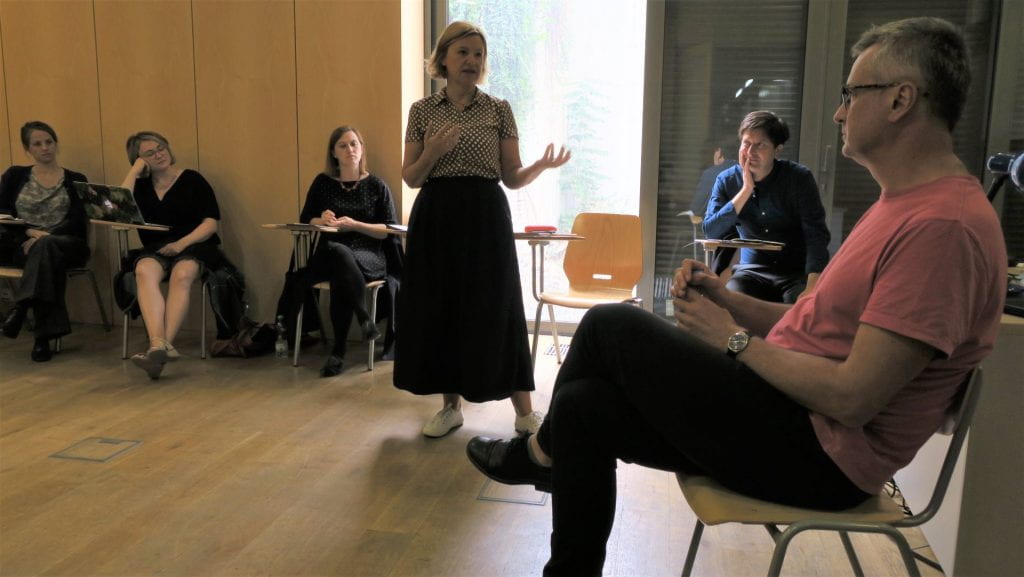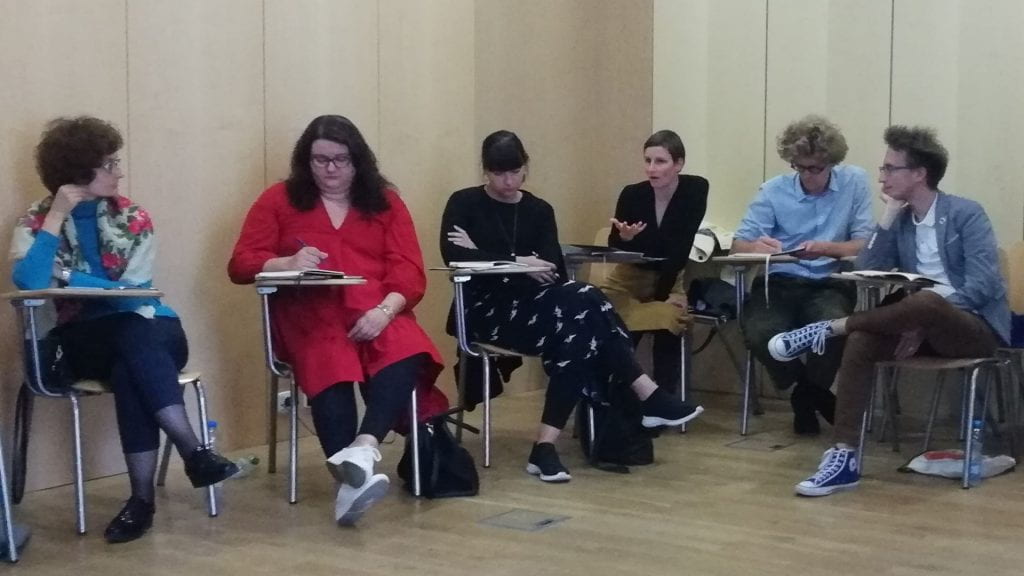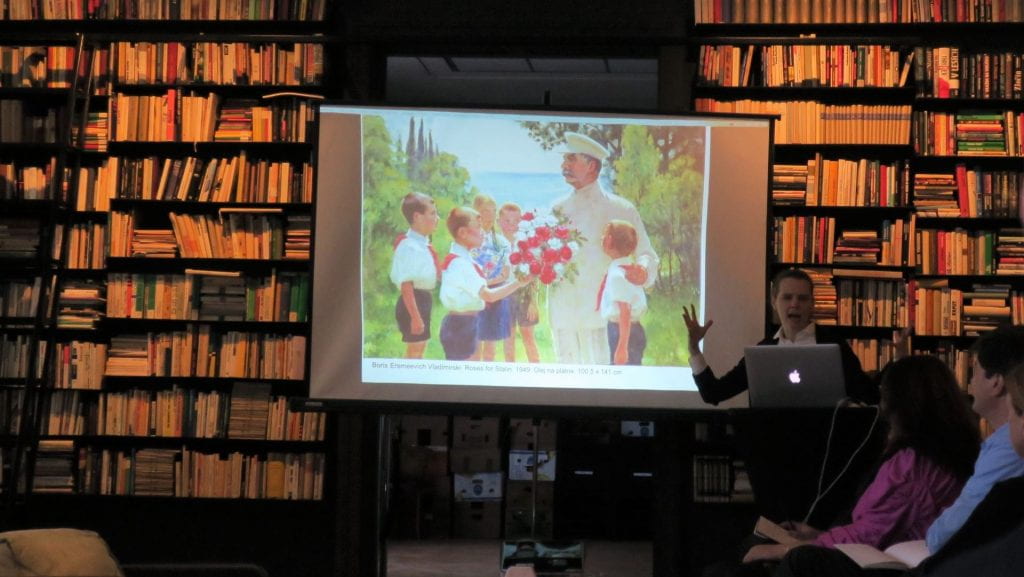Socialist Art
By confrontations, on 5 November 2019
 After Pavlina’s fruitful introduction to the various Confrontations exhibitions throughout the socialist period in Czechoslovakia and beyond, we continued the morning session with a lecture on socialist art by Tomáš Pospiszyl, Czech critic, curator and art historian. In 2018 JRP Editions published Pospiszyl’s monograph An Associative Art History: Comparative Studies of Neo-Avant-Gardes in a Bipolar World which aimed to locate East European postwar art in global history. Speaking at his home institution – Pospiszyl is a lecturer at the Academy of Fine Arts in Prague – he gave a most amiable overview of the tasks for the study of East European art during the socialist era.
After Pavlina’s fruitful introduction to the various Confrontations exhibitions throughout the socialist period in Czechoslovakia and beyond, we continued the morning session with a lecture on socialist art by Tomáš Pospiszyl, Czech critic, curator and art historian. In 2018 JRP Editions published Pospiszyl’s monograph An Associative Art History: Comparative Studies of Neo-Avant-Gardes in a Bipolar World which aimed to locate East European postwar art in global history. Speaking at his home institution – Pospiszyl is a lecturer at the Academy of Fine Arts in Prague – he gave a most amiable overview of the tasks for the study of East European art during the socialist era.
The presentation started on a positive note: East European art history has enjoyed much success during the last 15 years, nearly every important artist has had a catalogue published (in English) about his/her oeuvre, private and public collections have shown great interest in this field. However, at times this has come with a cost of assimilating western concepts to East European art. By emphasising neo-avant-garde tendencies or the semi-official artistic culture of the so-called grey zone, art historians have left behind blind spots in recent art histories, especially in terms of the most common official visual culture of the socialist era. In other words, we don’t know much about socialist art.
In order to encourage his colleagues to pick up the topic, Pospiszyl proposed dozens of ‘tasks’ (e.g researching the creation of socialist reality by socialist artists, analysing institutional conditions, looking into the relationship between high and low/mass culture under socialism) and urged fellow researchers to share the knowledge. I presume that the majority of the audience welcomed Pospiszyl’s urge to study the official art of the socialist era, but it seems to me that most of the listeners were reluctant to agree with the strictly socio-economically defined concept of socialist art. As always, it’s recommended not to go from one extreme to another.
(Gregor Taul)
 Close
Close





